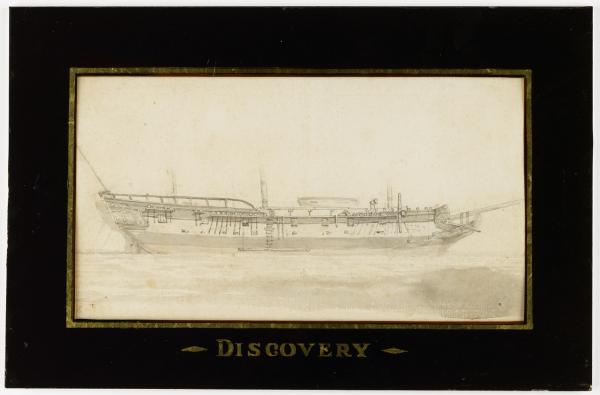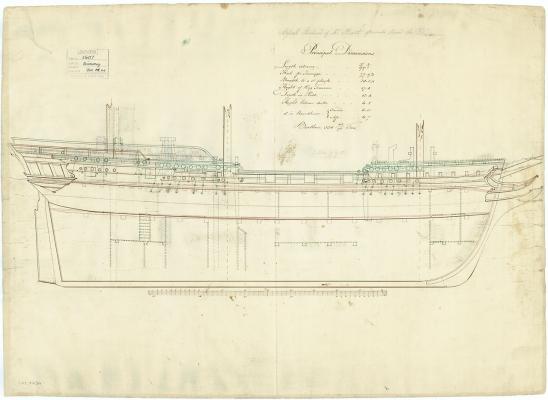-
Posts
13,329 -
Joined
-
Last visited
Content Type
Profiles
Forums
Gallery
Events
Everything posted by druxey
-
Yup, primer will show up everything! Fortunately, in this case a bit of automotive filler and sanding will see you right. I'd use caulking at the plank/stem joint, though.
- 253 replies
-
- ketkch
- gaff-rigged
-
(and 1 more)
Tagged with:
-
You haven't been idle, have you, Mobbsie? The new suit of sails looks terrific.
- 62 replies
-
- harwich bawley
- fishing boat
-
(and 2 more)
Tagged with:
-
The sides and sills of the timbers should match the quarter badge opening on the sheer draught.
- 889 replies
-
The sides of the opening should probably be parallel to each other, Ben.
- 889 replies
-

Cutting brass sheet
druxey replied to Landlocked123's topic in Metal Work, Soldering and Metal Fittings
Have you annealed the brass before attempting to cut it? -

Possible new technique for making sails.
druxey replied to rckdr's topic in Masting, rigging and sails
With due respect to the model sailmakers out there: any stitching at scales under about 1:6 looks way over-size, as Wefalck has said. -

Seeking information on determining load waterline
druxey replied to trippwj's topic in Nautical/Naval History
Ah, type yclept Gothic blackletter. Haue fun! -

Clamps for deck to frame
druxey replied to zamboknee's topic in Building, Framing, Planking and plating a ships hull and deck
If you are going to use the existing piece, wet it thoroughly on top before gluing and adding rubber bands. -
Sweet lines, vaddoc. She looks lovely so far. Well done.
- 253 replies
-
- ketkch
- gaff-rigged
-
(and 1 more)
Tagged with:
-
If you are referring to the Vancouver expedition, Discovery was as depicted here (From the RMG collection). She was similar to a naval sixth rate, but with a merchant ship body. (The cross-section would have been fuller and the bow much bluffer.) If you aren't too fussy, I suppose a kit of Fly, a Swan class ship might be adapted to resemble her. (For those interested, the drawing shows ventilation scuttles on the lower deck: a detail usually omitted from official draughts.)
-

ancre LE BONHOMME RICHARD by Jeronimo - FINISHED
druxey replied to Jeronimo's topic in - Build logs for subjects built 1751 - 1800
Very impressive! Congratulations, Karl.- 662 replies
-
- bonhomme richard
- frigate
-
(and 1 more)
Tagged with:
-

Princess royal 1780's British merchant ship
druxey replied to Jparsley's topic in Nautical/Naval History
That information is much more helpful! Illustrated below is very much like what her appearance would have been. The plan shows a slightly later and larger ship, after conversion in the navy. Take away all those gun ports and the barricades along the upper deck, replacing them with open rails, and you will have a pretty good idea of what your Princess Royal looked like. (This drawing is from the Royal Museums Greenwich collection, reproduced under the Creative Commons licence.) -

Seeking information on determining load waterline
druxey replied to trippwj's topic in Nautical/Naval History
Hi, Wayne. I was actually given a copy of this Occasional Publication No. 6 last month by a fellow modelmaker. He was dispersing the contents of a deceased model maker's workshop and knew I had an interest in "that early stuff". I'd never come across a copy before and was working my way through the text yesterday. -
I see that no-one has replied to your query in over a month, Holleia. The probable reason is that these weekly publication models were begun by many, but most (if not all) subscribers dropped out after a short while. I doubt if anyone lasted the whole 100 weeks and, if they did, they probably wanted to keep the completed model.
-

Princess royal 1780's British merchant ship
druxey replied to Jparsley's topic in Nautical/Naval History
A little more information would be helpful. Have you any idea of her size or tonnage, for instance?
About us
Modelshipworld - Advancing Ship Modeling through Research
SSL Secured
Your security is important for us so this Website is SSL-Secured
NRG Mailing Address
Nautical Research Guild
237 South Lincoln Street
Westmont IL, 60559-1917
Model Ship World ® and the MSW logo are Registered Trademarks, and belong to the Nautical Research Guild (United States Patent and Trademark Office: No. 6,929,264 & No. 6,929,274, registered Dec. 20, 2022)
Helpful Links
About the NRG
If you enjoy building ship models that are historically accurate as well as beautiful, then The Nautical Research Guild (NRG) is just right for you.
The Guild is a non-profit educational organization whose mission is to “Advance Ship Modeling Through Research”. We provide support to our members in their efforts to raise the quality of their model ships.
The Nautical Research Guild has published our world-renowned quarterly magazine, The Nautical Research Journal, since 1955. The pages of the Journal are full of articles by accomplished ship modelers who show you how they create those exquisite details on their models, and by maritime historians who show you the correct details to build. The Journal is available in both print and digital editions. Go to the NRG web site (www.thenrg.org) to download a complimentary digital copy of the Journal. The NRG also publishes plan sets, books and compilations of back issues of the Journal and the former Ships in Scale and Model Ship Builder magazines.






